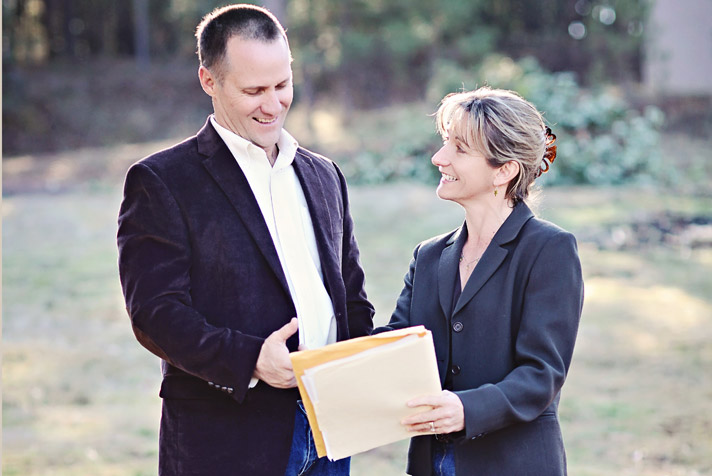On Real Estate & More – April 2022
Since 1991, Transportation Planning Rules have set transportation planning requirements for all Oregon cities and counties. It has become clear over the last decade that Oregon’s existing rules are not sufficient to meet Greenhouse Gas Reduction Targets.
On March 10, 2020, Governor Kate Brown issued Executive Order 20-04, directing state agencies to reduce climate pollution. In response, the Land Conservation and Development Commission (LCDC) is working to undertake the most extensive revision of Oregon’s land use laws in decades to encourage denser development and to reduce vehicle miles traveled.
The draft rules represent a major shift in how larger communities in Oregon plan for housing and transportation. Among other requirements, cities will be required to designate and zone “Climate Friendly Areas” (dense, walkable areas) sufficient to account for 30% of total needed housing. The rulemaking is focused on Oregon’s eight urban areas with populations over 50,000 people (Albany, Bend, Corvallis, Eugene/Springfield, Grants Pass, Medford/Ashland, Portland Metro, Salem/Keizer). If you live or work in one of these communities these rules will reshape the future of your community.
As defined by the Department of Land Conservation and Development (DLCD), a Climate Friendly Area is an area where residents, workers, and visitors can meet most of their daily needs without having to drive. They are urban mixed-use areas that contain, or are planned to contain, a greater mix and supply of housing, jobs, businesses, and services. These areas are served, or planned to be served, by high quality pedestrian, bicycle, and transit infrastructure to provide frequent, comfortable and convenient connections to key destinations within the city and region.
A key component of Oregon’s plan to meet its climate pollution reduction and equity goals is facilitating development of urban areas in which residents are less dependent upon the single occupant vehicle. Before the automobile became common in American life, cities had a variety of uses in city centers and other areas that allowed for working, living, and shopping within a walkable or transit accessible area. Over the last 100 years, the automobile and planning practices have served to separate activities, creating greater inequities within cities and widespread dependence on vehicles to meet daily needs.
The proposed rules will require cities (and some urbanized county areas) with a population over 5,000 within the seven metropolitan areas outside of Portland Metro to adopt regulations allowing walkable mixed-use development in defined areas within urban growth boundaries. Areas will be sized to accommodate a portion of the community’s housing, jobs, and services. Local governments will determine where these areas will be located, but many of these areas will likely be established in existing downtowns that may currently allow for mixed uses and higher densities. Associated requirements will ensure high quality pedestrian, bicycle, and transit infrastructure is available within these areas to provide convenient transportation options.
The rules provide a process for local governments to first designate climate friendly areas, then later to adopt development standards for those areas. The rules provide some minimum requirements for climate friendly areas, with a set of clear and objective standards that may be adopted, or a process for local governments to craft their own standards. Cities of more than 10,000 will monitor housing production within these areas over time and develop strategies to facilitate desired development.
The amended rules would require local governments in metropolitan areas to:
- Plan for greater development in transit corridors and downtowns where services are located and less driving is necessary;
- Prioritize system performance measures that achieve community livability goals;
- Prioritize investments for reaching destinations without dependency on single occupancy vehicles, including in walking, bicycling, and transit;
- Plan for and manage parking to meet demonstrated demand, and avoid over-building of parking in areas that need housing and other services;
- Plan for needed infrastructure for electric vehicle charging; and
- Regularly monitor and report progress.
Reducing driving is one of the most important ways to reduce pollution. Communities can reduce the number and length of driving trips by bringing land uses closer together and mixing land uses, which increases walkability. The goal is to provide more choices for people to take public transit, bike, or walk to get around.
For additional information or to sign up for email updates, contact oregon.gov/LCD/LAR/Pages/CFEC.aspx.

 Sandy J. Brown lives in Jacksonville and is a real estate broker and land use planner with Windermere Van Vleet Jacksonville. She can be reached at sandyjbrown@windermere.com or 831-588-8204.
Sandy J. Brown lives in Jacksonville and is a real estate broker and land use planner with Windermere Van Vleet Jacksonville. She can be reached at sandyjbrown@windermere.com or 831-588-8204.